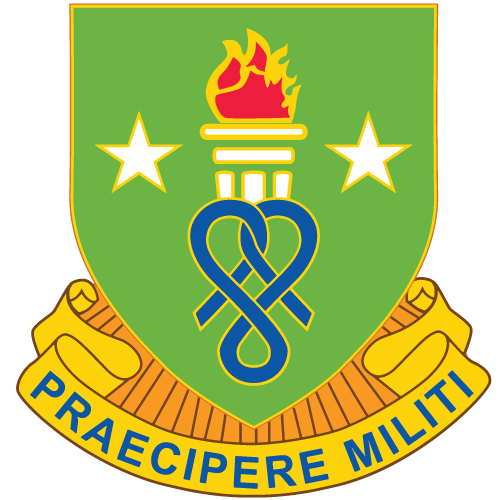as of: 29 Jun 18 Under Construction
Purpose: This course educates military and civilian personnel on fundamental cost analysis and cost management principles, theories, and application. This course is not intended to teach the mechanics of GFEBS, but will provide the knowledge needed to leverage GFEBS to its full potential and develop leaders’ ability to think critically about controlling and managing costs while fully supporting commanders and the mission.
Scope: This course provides the basic principles, concepts, and terminology related to cost analysis and cost management. Twothirds of the course focuses on basic cost accounting processes and concepts while one-third is dedicated to the application and reinforcement of the concepts learned through practical exercise and case studies. All CASCOM courses will introduce the major principles of Character Development during in-processing, and will further reinforce that information in subsequent lessons as applicable.
0.1 Conduct Administrative Time
1.1 Introduction to Principles of Cost Analysis and Management
1.2 Determine the Difference Between Internal and External Cost Reporting
1.3 Calculate Financial Position
1.4 Interpret Change in Financial Position Over a Period of Time
2.1 Calculate Unobligated Balance
2.2 Define Governmental Operating Activities
2.3 Interpret Changes in a Net Position Over a Period of Time
2.4 Determine Diff Acct Methods
3.1 Demonstrate How Trans Affect Acct Equation
3.1
3.1
3.1
3.1
3.1
3.1
3.1
3.2 Complete Steps 1-3 in the Accounting Cycle (Journalize, Post, Trial Balance)
3.2
3.2
3.2
3.2
3.2
3.2
3.2
3.3 Prepare Income Statement
3.3
3.3
3.3
3.3
3.3
3.3
3.3
3.4 Complete all Steps in Acct Cycle
3.4
3.4
3.4
3.4
3.4
3.4
3.4
4.1 Calculate Cost of Goods Manufactured
4.2 Calculate Cost of Goods Sold
4.2
4.2
4.2
4.2
4.2
4.2
4.2
4.3 Determine the Difference Between Internal and External Cost Reporting
5.2 Communicate the Impact of Poor Cost Information on a Decision
5.2
5.2
5.2
5.2
5.2
5.2
5.2
5.3 Recommend Course of Action in Outsourcing
5.3
5.3
5.3
5.3
5.3
5.3
5.3
5.4
Determine the Purpose and Motivation for Managerial Costing
6.1 Calculate Total Cost and Per-Unit Cost Given Various Production Volumes
6.2 Calculate Total Cost and Incremental Costs
6.3 Verify Unit of Measures in a Multivariate Equation
6.4 High Low Method
6.4
6.4
6.4
6.4
6.4
6.4
6.4
7.1 Calculate Present or Future Value of Cash
7.2 Recommend Investment COA
7.3 Calculate Probability of a Given Outcome
7.4 Calculate Expected Values of Alternative COA
8.1 Distribute Single Cost Pool to Users
8.2 Calculate Cost of a Service-Job with Single Cost Pool and Various Drivers
8.3 Calculate Cost of a Service Job with Multiple Cost
8.4 Identify Common Errors in ABC Planning
9.1 Calculate Break Even Point
9.2 Identify Sensitive Variables
10.2 Calculate Point of Indifference Between Two Cost Scenarios
10.2
10.2
10.2
10.2
10.2
10.2
10.3 Calculate Point of Indifference Between Two Cost Multi-period Scenarios
10.3
10.3
10.3
10.3
10.3
10.3
10.4 Calculate Economic Order Quantity
10.4
10.4
10.4
10.4
10.4
10.4
11.1 Calculate a Production Plan with the Inventory Chain Template
11.1
11.1
11.1
11.1
11.1
11.1
11.2 Project Sales or Production Levels
11.2
11.2
11.2
11.2
11.2
11.2
11.3 Calculate Projected Costs with the Cumulative Average Learning Curve
11.3
11.3
11.3
11.3
11.3
11.3
11.4 Estimate Future Costs Given Planning Factors
11.4
11.4
11.4
11.4
11.4
11.4
12.1 Perform Cost Benefit Analysis
12.1
12.1
12.1
12.1
12.1
12.1
13.1 Calculate Volume and Performance Variances
13.1
13.1
13.1
13.1
13.1
13.1
13.2 Calculate Spending and Efficiency Variances
13.2
13.2
13.2
13.2
13.2
13.2
13.3 Explain Causes of Variances Using the Reconciliation Format
13.3
13.3
13.3
13.3
13.3
13.3
14.2 Id Similarities Between Battlefield Mngt and Cost Mngt
14.3 Identify the Steps in an After Action Review
15.1 Prepare a Forecast, Variance, and Reconciliation Briefing
15.2 Perform an AAR Briefing
